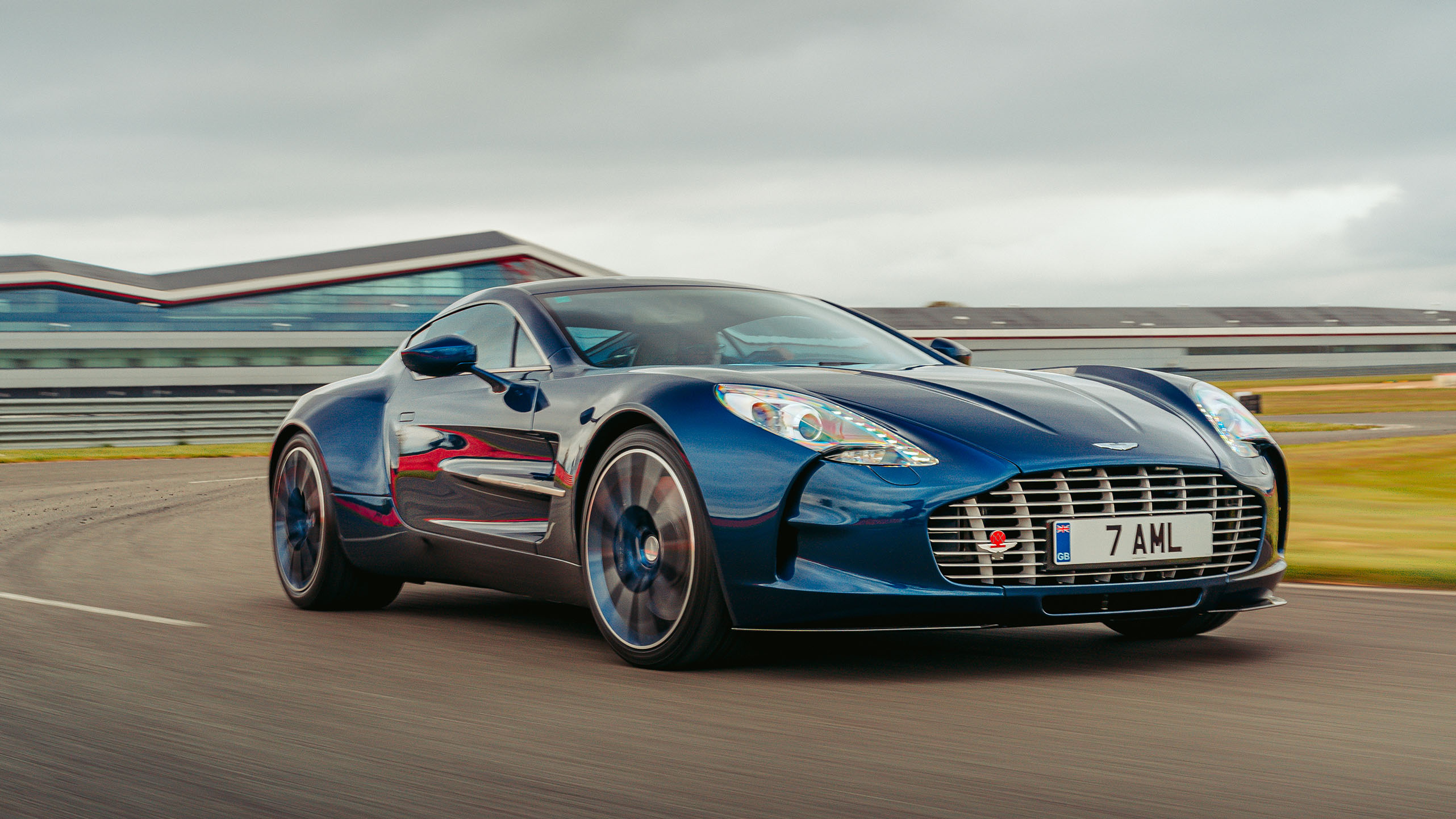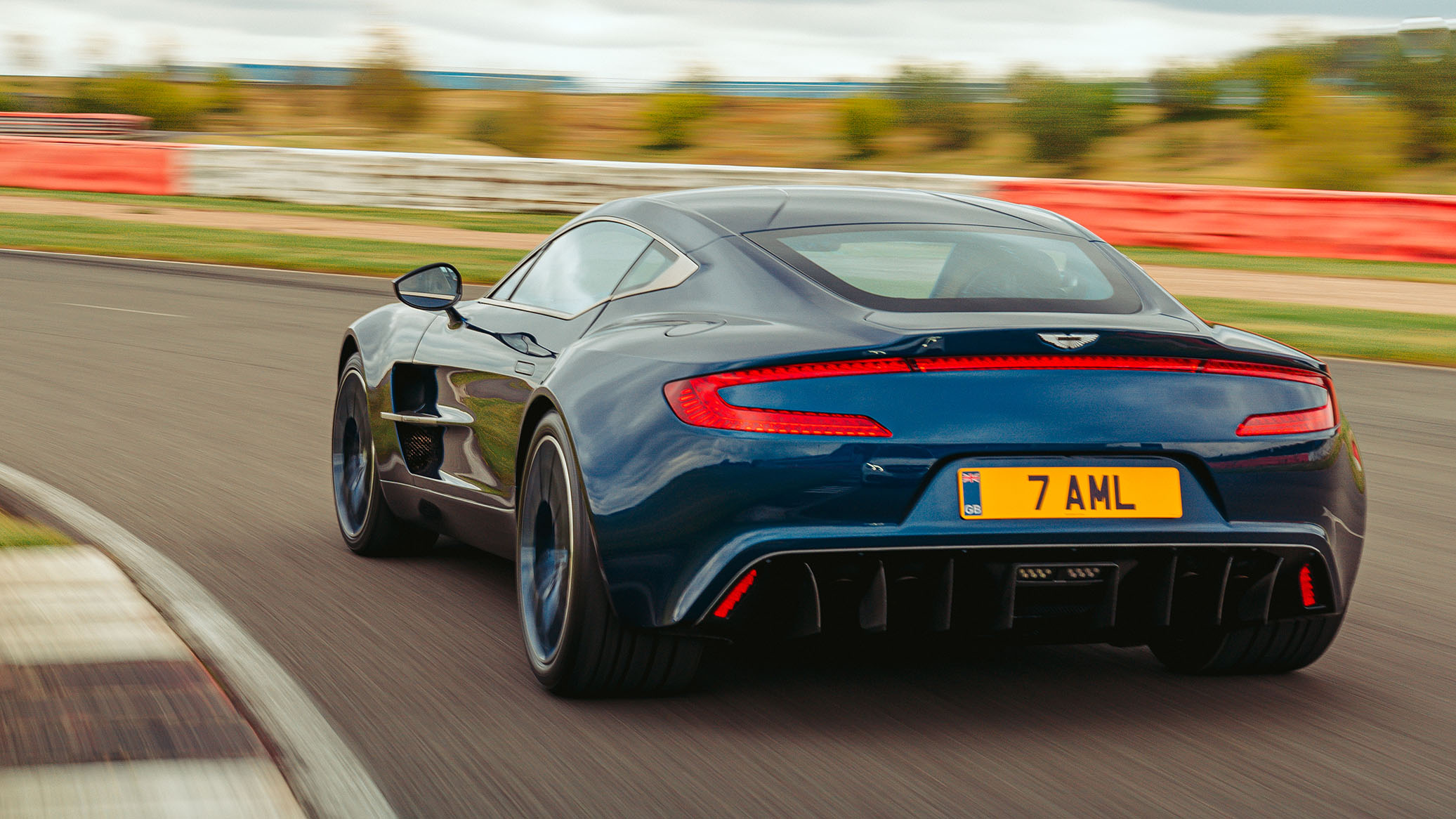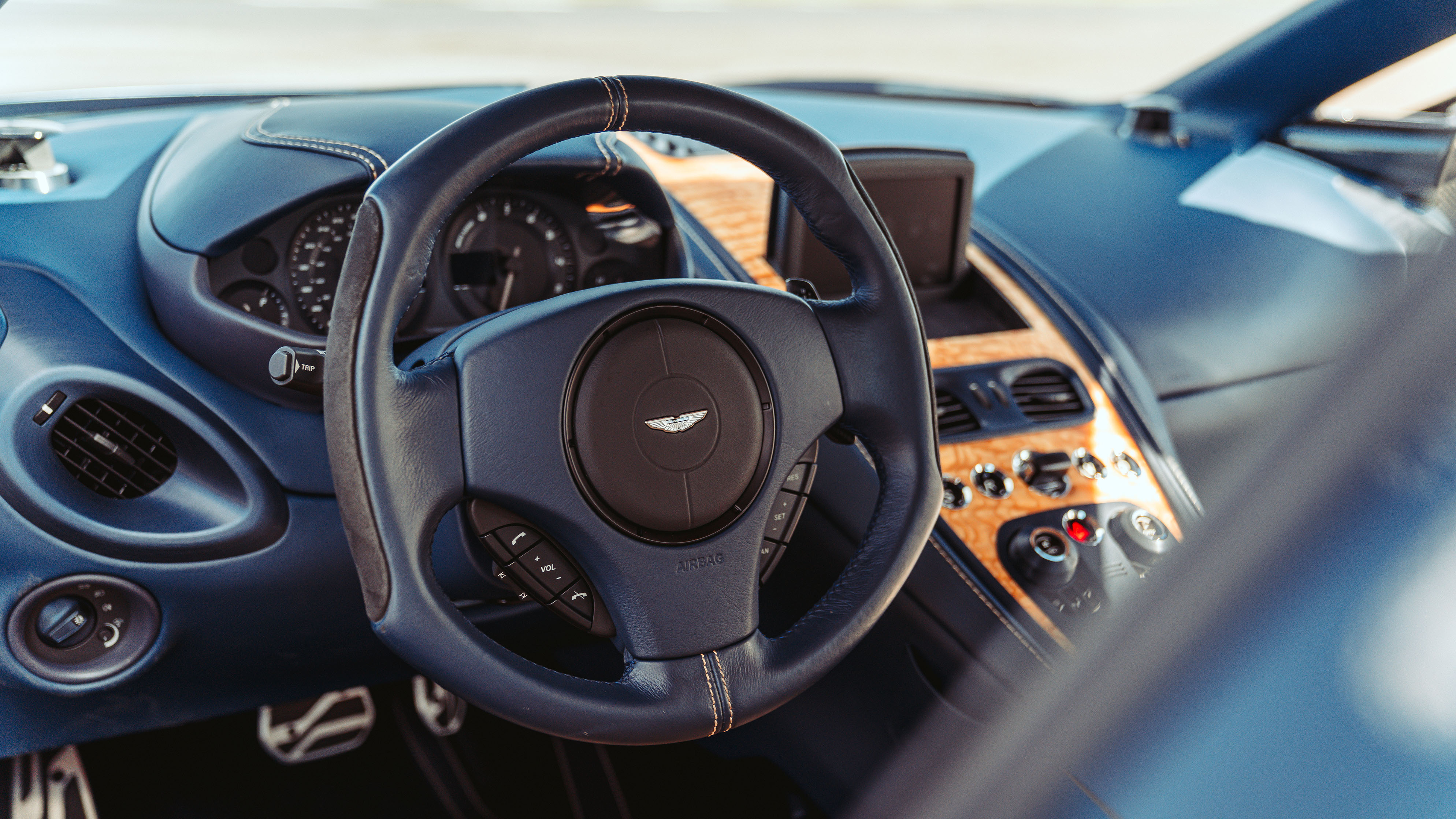
Aston Martin One-77 review
Driving
What is it like to drive?
The One-77 hails from a time when Aston Martin was ever-so-slightly overdoing the whole ‘power, beauty, soul’ mantra. That three-word motto even used to flash up on the dashboard as you started one of its cars. But in the One-77, that self-aggrandising sense of occasion feels utterly appropriate.
Slot the oblong glass ‘key’ into its spring-loaded orifice amid the dashboard and it really does feel as if you’re somehow feeding the engine, which lies mere centimetres behind the bulkhead – some sort of appetiser.
Press the transparent domino until flush with the console and it's lights, big noise, action. The anti-clockwise rev-counter moves off its stop and settles into a creamy-smooth idle, backed by a wonderfully exotic, orchestral idle. While the One-77’s exhausts exit out of the back of the car, directly into its diffuser, they get there by running down the carbon sills, rather than through the central spine. As a result, you and your lucky passenger are completely enveloped in noise. You’re about to have a very good day.
As per every Aston from the past couple of decades, you select drive not with a stalk or a lever, but a ‘D’ button on the dashboard. Thankfully, Aston did away with its fiddly fly-off manual handbrake for the One-77, but the bad news is the company also decided a manual gearbox would’ve been out of place. And it fitted a robotised six-speed, single-clutch manual, with paddleshifters.
Now, 2009 was a long time ago in motoring terms, but even then, flappy paddles no longer guaranteed more head-nodding driveline shunt than you’d get riding a camel. The Nissan GT-R had blown everyone away with its seamless twin-clutch gearbox. Porsche was busy refining its own PDK transmission. The world had spoken. Two clutches good. One clutch bad.
Aston Martin insisted the DB9-derived automated manual was the right choice for the One-77 because it was indeed lighter than a DCT. Lamborghini and Pagani offered the same excuse when presenting the Aventador and Huayra. Frankly, Aston Martin simply didn’t have the budget or time to develop a blank-sheet twin-clutch ‘box capable of juggling 750 horsepower, so it had to stick with what was on the workshop shelf.
And at first, it’s the rear-situated transaxle gearbox, married to the engine by a carbon propshaft housed in a magnesium torque-tube, that defines your early One-77 experience. It’s utterly, inexcusably crap.
You growl away in first… and stay in first. For ages. First is desperately retained as the gearbox nervously puts off the awkward moment-of-truth when it has to shunt into second. Cog swaps are desperately slow in automatic mode, and woe betide the hapless billionaire who has to execute a fraught three-point turn.
By the time it’s found reverse and you’ve summoned the courage to find the biting point, the car’s appreciated so much in value you could’ve hired a crane to spin it instead. As per all single-clutch gearboxes, you’ve got to avoid creeping stop-start traffic or performing hill starts, else you’ll barbecue the clutch. Best have the landscape gardeners round to flatten your driveway approach.
So, it’s no good for posing, and parking it (or pulling it on and off your private cargo jet) is like playing Russian roulette with a flamethrower. And this might seem surprising, because that’s not what you expect from an Aston Martin.
You presume this is a gentlemanly super-GT: an impeccably-mannered stiff upper-lipped member of the gentry. But it isn’t. It’s actually a knife-edged, race-ready, blood-and-thunder supercar. The One-77 is a well-dressed savage.
The throttle is a long-travel squeezathon, not the sort of turbo-hybrid switch you get in a modern hypercar. And as your right foot disappears into the depths of the footwell, it summons a rich cacophony of induction noise, as the big V12 breathes in through the outer titanium intakes set into the bonnet.
With modern active exhausts and piped-in autotune we’ve forgotten how melodious a massive naturally aspirated engine can be – how it gives you distinct, interesting tones on different throttle openings, building like a well-drilled choir to a baleful crescendo.
All Aston V12s sound soulful, but this engine has a fury to it. It’s revvier. Harder-edged. Bloody frightening.
Now, you’re almost glad of the pause for thought as the gearbox interrupts the row. Even in Sport mode, summoning the gearchanges via the column-anchored paddles with a complete foot-off-pedal lift to smooth out the transition, the One-77 never nails a totally seamless shift, but that makes the next G-force hit as the gear slots home and the V12 bellows forward again even more exhilarating.
In-gear, it feels rampantly quick. Forget the gearbox. Just leave it in third. That 3.7sec 0-62mph time has a lot more to do with the gearbox than the One-77 not having the firepower of today’s top-flight supercars.
The One-77 lulls you into thinking it won’t be neck-snappingly quick because of its relaxed, cab-back gait. It’s also easy to forget this is not the standard, weighty, meat-and-three-veg Aston Martin, made out of cathedrals and snooker tables.
With its carbon monocoque and dainty panels, it weighs 1,630kg. That’s 200kg less than today’s DBS ‘Superleggera’, 100kg lighter than today’s Ferrari 812 Superfast and actually a mere 20kg or so heavier than the all-carbon Lexus LFA, which boasts two fewer cylinders.
Arrive at a corner and the ceramic brakes scrub off speed brutally – just as well, given engine braking is a ‘when will it downshift?’ guessing game. Turn in and you’re instantly reminded how low down and far back the One-77’s engine is hung in the chassis. Despite feeling like you’re sat right over the back axle in a giant clownshoe, the car pivots delicately and responsively about your hips.
There’s maybe a touch more initial body roll than you’d expect – rendered more noticeable by the unsupportive seat – but the car settles into a trustworthy stance mid-corner and the oddly-misshapen steering wheel bristles with feedback. The flat sides look hopelessly uncomfortable to grasp, but they feel natural to hold, and the steering – quicker than a contemporary Aston but not as instant as a modern Ferrari – never asks you to take your hands off the wheel, so feeding the curious perimeter isn’t a problem.
Everything about the One-77’s handling is adjustable. Each original owner had the factory set the double wishbone suspension’s pushrod dampers to their personal preference, so you can opt for a track-only skateboard if you’re planning to hire out Yas Marina for the week, or a more loping softness if you’re driving riviera to riviera.
Should you take your One-77 to a circuit, you’ll discover that with space to play with, this million-quid bauble has a dark sense of humour. That V12’s always goading you into wringing it out, but despite the racecar-like damping, perfect weight distribution and 335mm rear rubber, it’s always got more power than traction. Even in third. And fourth.
Get greedy with the throttle mid-corner and there’s absolutely nothing ye olde 2009 traction control can do to stop the revs yelping as the rear tyres cry ‘oh for heaven’s sake’.
And yet, there’s such a gorgeous natural balance to this wild, untamed Aston. It’s a moment you’ll provoke, not live in fear of. Give me an off-camber third-gear corner over a three-point turn in this monster any day.
Featured

Trending this week
- Car Review
BMW 1 Series






